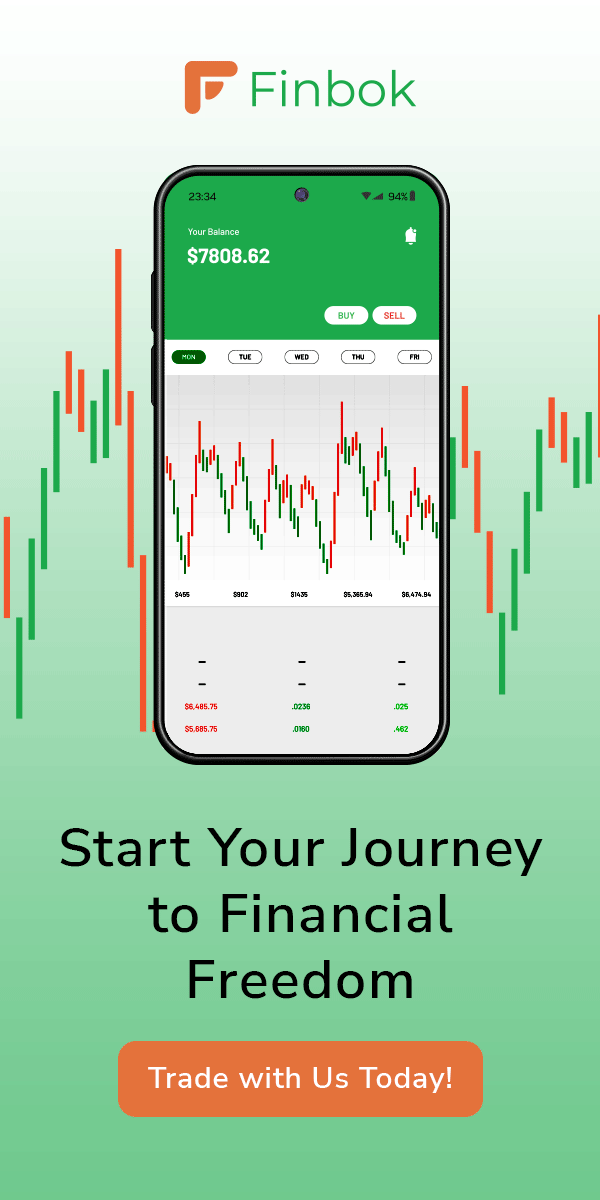Commodity markets are booming in 2024. Gold has hit record highs and appears to continue to grow in value.
At a time when global events and policy changes can charge up commodity markets, traders will face an ever-more complex trading space in March 2024.
Oil, gold, natural gas, and other commodities are proving to be amazingly dynamic.
Finbok provides an analysis of these commodity market patterns together with views about how geopolitics, ‘green’ politics, and corporate strategies play into this space.
In this article, we analyze the impact of commodity market changes, both positive and negative, and offer insights that can shape your trading decisions.
Commodity Markets – Gold forecast:
Gold prices held steady on March 11 after a series of record highs last week as investors waited for US inflation data for clues on the Federal Reserve’s next policy steps.
Spot gold was almost unchanged at $2,176.30, after hitting a record of $2,194.99 on March 8, a sign that the US labour market has slowed. US gold futures eased 0.1%, to $2,183.20.
The CME FedWatch tool reflects that around a 70% probability that the Fed will start rate cuts by June.
Expectations that the Fed will cut rates in 2024 have led the gold traders to build a net long position by 63,018 contracts to 131,060 for the week ending March 5 March.

On the metals market, spot silver was unchanged from the previous session held at $24.30.
Gold Trading: Here’s All You Need to Know to Trade in 2024!
Meanwhile, platinum rose 1.3% to $924.40 a troy ounce, while palladium added 0.8% to close at $1,028.25.
Commodity Markets: Global Oil Market Dynamics
Amid lingering geopolitical tensions in the Middle East and Russia, as well as worries about slowing demand from China, global oil prices have dropped.
Benchmark Brent fell below $82 a barrel, while US West Texas Intermediate (WTI) also declined; Brent dropped by 31 cents to $81.77 a barrel and WTI by 34 cents to $77.67, respectively.
Why the drop? China, the world’s biggest crude importer, is to blame for the decline in prices in commodity markets.
While Brent managed to keep its price above the $80 mark for March to date, it closed down 1.8%, while WTI closed down 2.5%.
Commodity Markets – Oil Trading:
When hyperinflation dominates the news, traders can open long positions on Brent or WTI futures.
This is in expectation of a continuing bull run in price if perceived geo-political tensions spark further supply disturbances.
Traders can open short positions if a resolution is expected, exploiting the volatile price action to capture profits in March.
Escalating Tensions and Maritime Security
One of the major issues affecting commodity markets in the Mediterranean is the ongoing unrest in the Middle East, especially in Yemen.
Attempts to broker a ceasefire in Yemen have faltered and there appear to be no meetings planned in Egypt on the horizon.
In August 2023, drones were shot down in the Red Sea by US, French, and British forces. This follows attacks by Iran-aligned Houthis of Yemen that targeted many ships in the Red Sea with missiles and drones.
An explosion was reported at a ship 71 nautical miles southwest of the Yemeni port of Saleef on August 9 , yet another example of the vulnerability of Red Sea maritime security.
All of this translates to vulnerable trade and volatile commodity markets.
Examples of how trading with options could work:
Say a trader wants to hedge against an oil price spike whenever maritime security around the Gulf of Guinea is threatened.
They could buy an option on crude oil that will pay if and when a spike does follow the confirmation of a threat.
In the bull scenario, where the price spikes, they would profit.
In a bear scenario where the price drops, they would lose some money as the option expires.
Chinese Oil and Coal Import Trends
The conflict in Yemen, combined with a rise in crude oil imports over the first two months of 2024, suggests lingering demand weakness from China.
As a result, we’re left with mixed data points on the US economic outlook, and OPEC+ agreeing to keep its oil production cuts in place.
All of this suggests a complicated story for global energy supply and demand in commodity markets.
China’s coal imports also suggest stagnant or declining total imports for 2024.
These dynamics are worth keeping an eye on when it comes to China, as they could influence foreign coal markets and prices.
Commodity Markets – Trading Example:
1. Traders can short oil futures or related ETFs – expecting soft trends in bearishness.
2. For coal, an opportunity might be short-selling the stocks or futures of China-dependent producers.
Commodity Markets: Future Natural Gas Trading Opportunity
Summit Carbon Solutions, one of the world’s energy companies, is working to build the largest CO2 capture and storage pipeline in the US.
Confronted with increasing pressure about climate change and natural climate solutions, the company has been vague on whether it will decrease production in oil and gas fields.
On the one hand, Summit Carbon has maintained publicly that its project does not contribute to enhanced oil and gas field production.
On the other hand, the company has indicated in writing to other parties, including North Dakota’s oil industry, that the project is intended for enhanced oil recovery (EOR) ‘if given an economic incentive to do so’.
Such a strategy aims to build political support for the project, which would capture as much as 18 million metric tons of CO2 a year from up to 57 ethanol plants in North Dakota and begin capturing it as early as 2025, with operations beginning in 2026.
The project’s success will also test the attractiveness of carbon capture and storage technology in the US, though it continues to face questions about how to scale it up and whether the public will even accept it.
Though viewed as a carbon mitigation opportunity by the ethanol industry, the petroleum sector sees the project as a way to boost flagging production from North Dakota’s Bakken region.
It even has a local promotional group that sells the project’s benefits through considerable advertising spending.
Publicly, Summit has kept repeating that it will not move to use the new pipeline for EOR.
Yet, by the middle of this year, the company’s chief executive had begun to hint that this could change.
Most environmental activists oppose EOR because it prolongs dependence on fossil fuels; the leadership at Summit, however, acknowledges that the project is still evolving. The company believes its primary goal is the processing of carbon from the ethanol industry, but it also remains open to changing to follow the market-dictated direction.
This story comes against the backdrop of North Dakota’s peak production of oil in late 2019, and subsequent decline.
Commodity markets – CO2 for trade
The CO2 required to open the state’s vast oil reserves puts Summit’s pipeline into context as a very important, external CO2 supply.
Since the beginning of construction, the company has had to contend with regulatory delays and difficulties obtaining easements on private land.
However, the project continues to press ahead, with institutional support from state and energy industry circles.
There’s potentially more explicit promotion of the project under recently introduced federal environmental policies, which view the project as part of a slate of clean energy opportunities, ones that could win it a change in application and focus.
Trading example: If you believe in the growth of CCS technology, you’ll likely find the stock of CCS technology companies, or exposures to them in exchange-traded funds (ETFs), attractive.
Commodity Markets: Major Mergers in the Energy Sector
In March, the EQT Corporation announced a $14.2 billion all-stock agreement to buy Equitrans Midstream Corporation, which would create an integrated US natural gas company.
Similarly, Chesapeake Energy Corporation, plagued by hostile takeover attempts, is planning to join forces with Southwestern Energy.
Such mergers and acquisitions fit into a larger story of strategic integration to reshape the US commodity markets into what China was in the 1990s.
Just as China was in an advantageous position as a natural gas-importing nation in the mid-1990s, the US is in sight of being a similarly influential energy producer and user.
With production growing and market forces leading to restructuring, the global commodity markets for natural gas might finally be moving.
Trading example: Merger arbitrage strategies would involve taking long positions in the target’s shares and shorting the acquirer’s stock, having secured the knowledge that those shares will be snapped up once the merger is made official.
Profit would come from the spread adjustment.
Trading commodities in 2024 is the best thing you can give your portfolio this year when investors have depleted most of their strategies to hedge against inflation and diversify their assets.
Here is how Finbok can help you trade commodities:
Diversification
Commodities tend to move as a separate ‘uncorrelated’ asset class to stocks and bonds, meaning a strategy that trades heavily in commodities such as oil, gold, and grains can provide a powerful means of diversification in a portfolio.
Inflation Hedge
As fears of inflation mount, commodities make an ideal hedge. Historically, commodities have kept pace with price increases in inflationary periods and are considered an ideal way to protect purchasing power.
Growth Opportunities
Emerging technologies and environmental policy are also transforming the landscape of commodity markets.
The energy transition is increasing demand for metals such as copper and lithium, used in everything from electric vehicles to renewable energy infrastructure.
Commodities trading could be an area for explosive growth in the future.
Volatility = Profits
Commodities can also be volatile, thanks to shifts in supply and demand, weather, and geopolitical events. For savvy traders, these factors present potential opportunities for short-term gains on price movements.
Market insights: Finbok delivers fresh insight into commodity markets, keeping traders informed about what’s happening in the markets right now.
Advanced trading tools: We offer a toolbox of features to support technical analysis, charting, and risk management processes, designed to support traders of all levels.
Education: We provide educational lectures and trading tips to help novice commodities traders better understand the markets and develop sound trading practices.
Personalized Advice: Need personal assistance with your plan? Then leave it to our experienced consultants, who will give you one-on-one recommendations for you to make your commodities trade uniquely perfect.
Strategic trading of commodities can help you diversify and protect against inflation while providing the opportunity for enormous livestock returns. But you’ll need help.
And that’s where Finbok comes in.
Finbok helps traders and risk managers, individual investors, and big funds by providing the market knowledge, tools, and support needed to trade commodities reliably.







